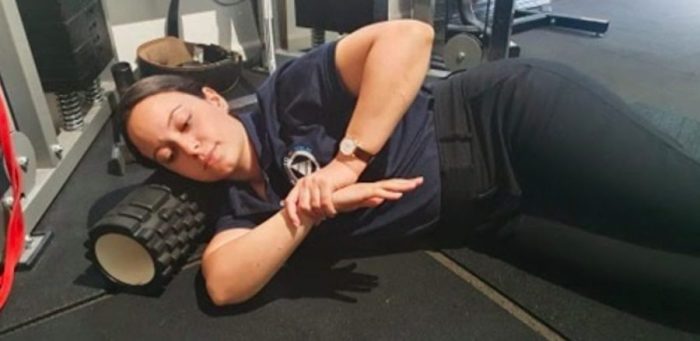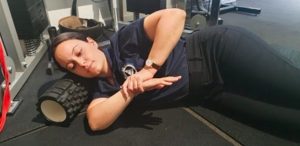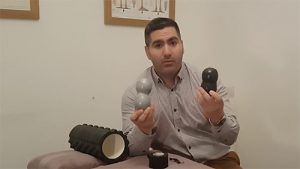Maybe it sounds like a move straight out of a cheezy 1980’s wrestling show, where the villain locks the hero wrestler into the hold and is seemingly about to win. Then the hero miraculously escapes and regains some super strength and ends up winning the match. The Sleeper Stretch is definitely not that. But what it does have in common with the wrestling scenario is that it is a key movement that can help revive an injured shoulder, and help you win the fight against the shoulder pain that seemingly had you beat.
The Sleeper Stretch is often the game changer when it comes to shoulder injuries. It’s the silver bullet that makes the change where it is needed most; through the shoulder capsule.
I’ve written extensively on shoulder injuries in a previous blog titled, Understanding Shoulder Pain & How You Can Fix It. Please read that article if you want a more detailed explanation as to why shoulder pains occur, why conventional methods of treatment fail, and what you can do to break the cycle of pain.
For the purposes of this article, I will focus on the Sleeper Stretch and explain why it is essential in the treatment of most shoulder injuries, what it actually does, and how to perform the stretch.
As explained in previous articles on Shoulder Pain, most shoulder injuries cause a deformation in the shoulder capsule. The Shoulder capsule is made up of ligaments that surround the ball and socket joint of the shoulder. Throughout the build up of the injury, the shoulder capsule slowly changes its structure to better suit the outwards (external) rotation of the shoulder joint. This then shortens the rotator cuff muscles and predisposes them to injury and inflammation.
Most people in this scenario will have issues with moving their arm inwards and behind their back, like they would when put on a jacket or unclip a bra strap. So why a therapist would encourage more outward rotation is strange to me.
Therapists will prescribe exercises and stretches to actually reinforce the injured position. This is basically wrong and shows little thought given to the practical mechanics of the active patient in their care. What is needed here is a movement that slowly and gradually places a stress on the shoulder capsule that will take the shoulder into a more inwardly (internal) rotated position and change the structure of the ligaments that form the shoulder capsule. This is where the Sleeper Stretch comes in.
The Sleeper Stretch is highly effective in taking the shoulder into internal rotation. This slowly stretches the shoulder capsule and unwinds the months and years on outward rotation. Done properly, it also lengthens the rotator cuff muscles that are responsible for external rotating the shoulder.
The stretch should be performed slowly and gradually to encourage the stress on the ligaments. Ligaments are much tougher than tendons and muscles and require more force. If this force is applied rapidly, it will cause the whole joint to move and you’ll miss the point of the stretch. Applying this force slowly is safe and will slowly target and change the ligament under load. The position and stretch is meant to be uncomfortable and on the edge of the pain threshhold, as we are trying to make a change to the ligament, and this requires some force and load.
There is a way that we perform the Sleeper Stretch on the patient. We’re able to generally get a little further than what the patient can. But a little of your effort each day definitely trumps a lot of our efforts once or twice a week. So here are the steps to show you how to perform this properly at home. You’ll just need a pillow and space on the floor to lay down. You’ll get more out of it performed on a hard floor than on a mattress or couch.
Sleeper Stretch for Shoulders
Sleeper Stretch Step 1:
Get down on the floor and lay on the side of the injured shoulder and place the pillow under your head as if sleeping on your side. Make sure your body and other shoulder is directly over your injured shoulder, and that the shoulder down on the floor is not pushing through under your body. This will pin the shoulder down.
Sleeper Stretch Step 2:
Raise your arm up just above 90° with elbow extended out, so that your elbow is slightly above the shoulder.
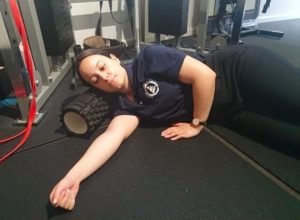
Sleeper Stretch Step 3:
Bend your elbow to 90° with your palm facing towards your feet.
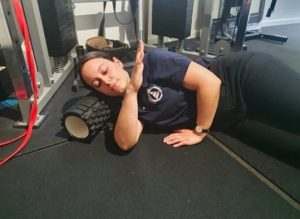
Sleeper Stretch Step 4:
With your palm facing your feet, place your other hand over your forearm and wrist.

Sleeper Stretch Step 5:
Turn your arm down towards the floor. Do this slowly, directing it slightly towards your body. Don’t let your elbow sink lower than the shoulder.
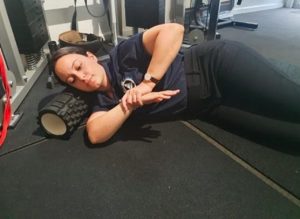
Sleeper Stretch Step 6:
You will feel a tightness and a pulling over the front and side of the shoulder, this is normal. Keep pushing down slowly until the position is highly uncomfortable.
Sleeper Stretch Step 7:
Hold this position until the discomfort eases. Sit up and shake the arm off.
Perform this stretch 3 times, each time pushing to a place of discomfort.
Whilst Shoulder pain can present with some serious problems that may need further investigation or even surgical intervention, the most common shoulder injuries can be greatly helped by learning this particular stretch. Even without a presenting shoulder complaint, doing this stretch is a great way to keep your shoulders healthy and stop them from developing into problematic, painful shoulders in the future.
If you feel that any of the information we’ve given you here resonates with you and you feel we are in a position to help, please BOOK ONLINE as we would welcome the opportunity. If you feel that we can help you in any other way, please reach out to us via our CONTACT PAGE.

Dr. Sami Karam, Osteopath
I’ve been a qualified Osteopath since 2004. I’ve been playing football ever since I could remember and I have a passion for it. I’ve played at the highest level in the NSW State League at both Youth and Senior levels, and have also been Head Physician at numerous State League Clubs. I’ve travelled internationally and consulted with Sports academies in Barcelona and Italy. I have a special interest in Strength and Conditioning for footballers, as I believe it gives them an edge in their physical competition. My passion involves bringing all of this knowledge into every single treatment that I provide for all athletes. If you feel that I can help you and want to reach out to me, contact me.

